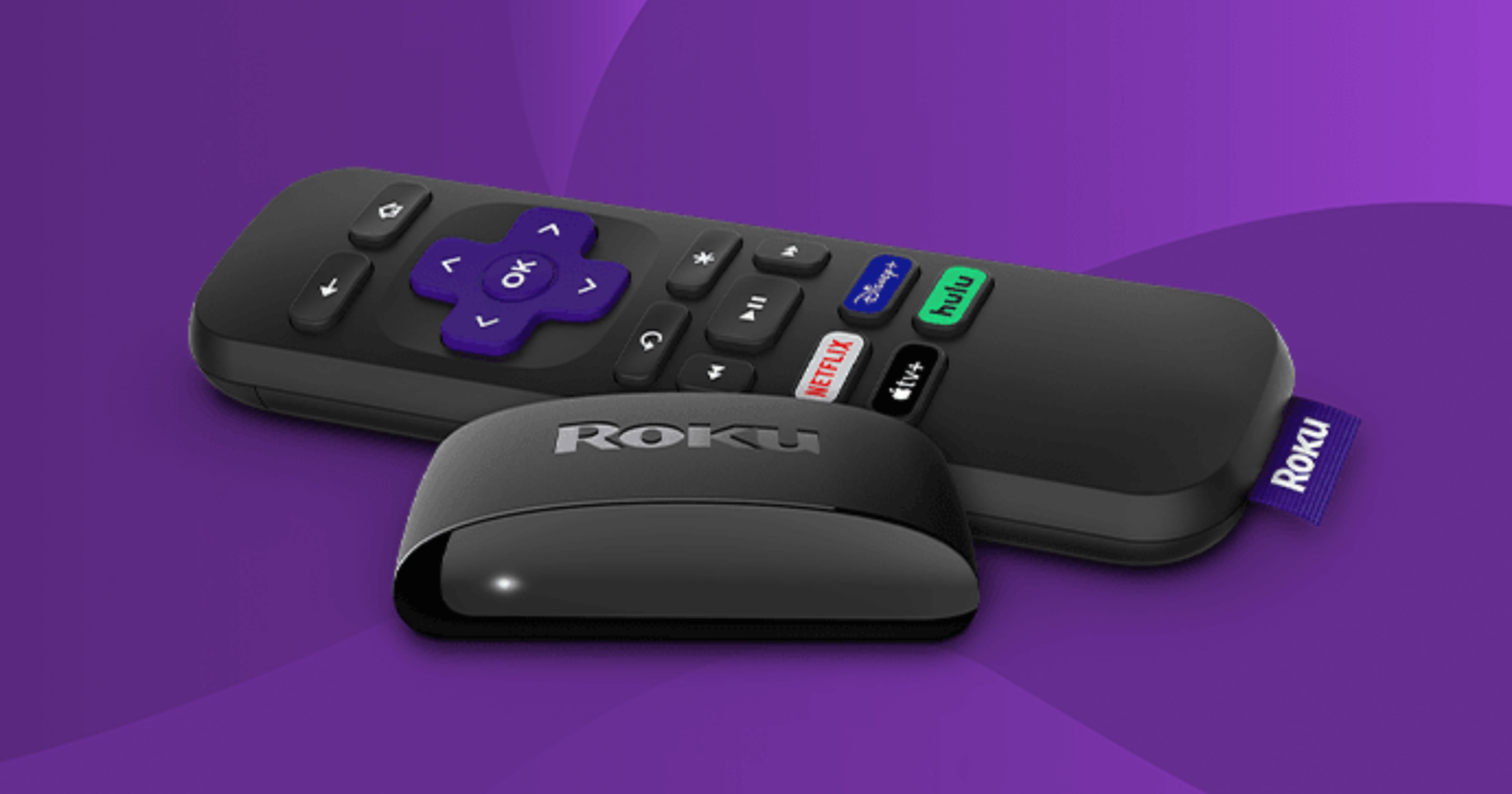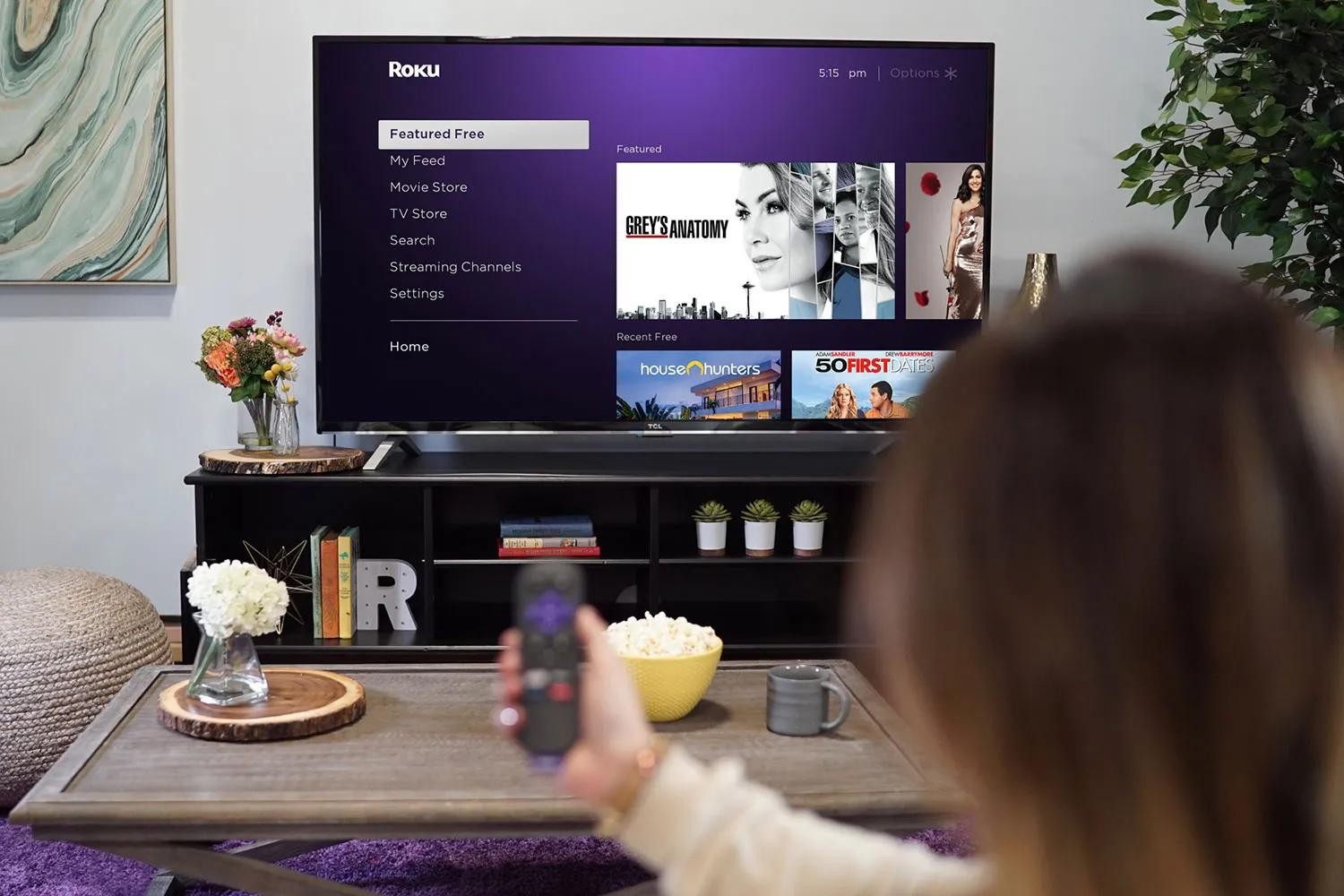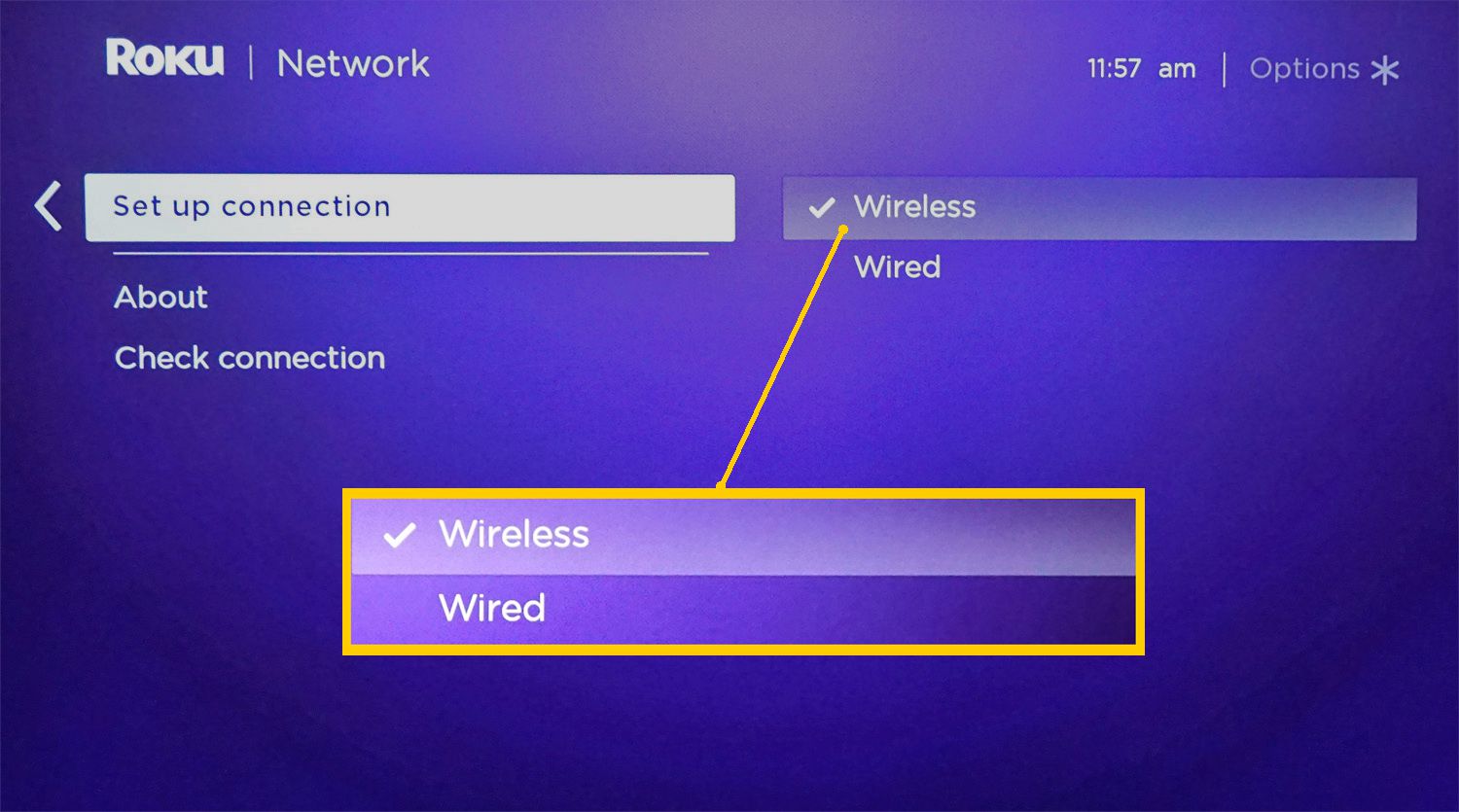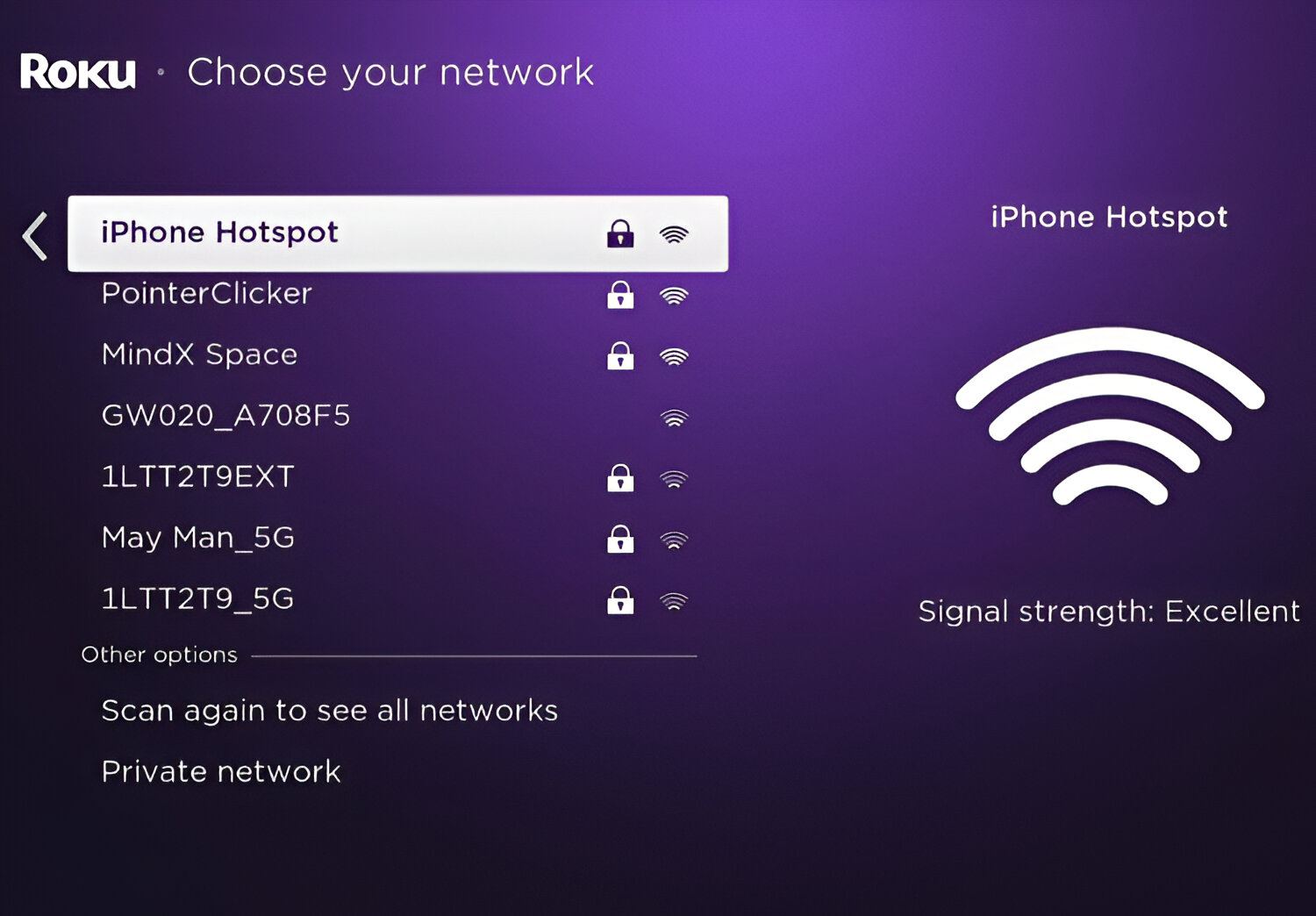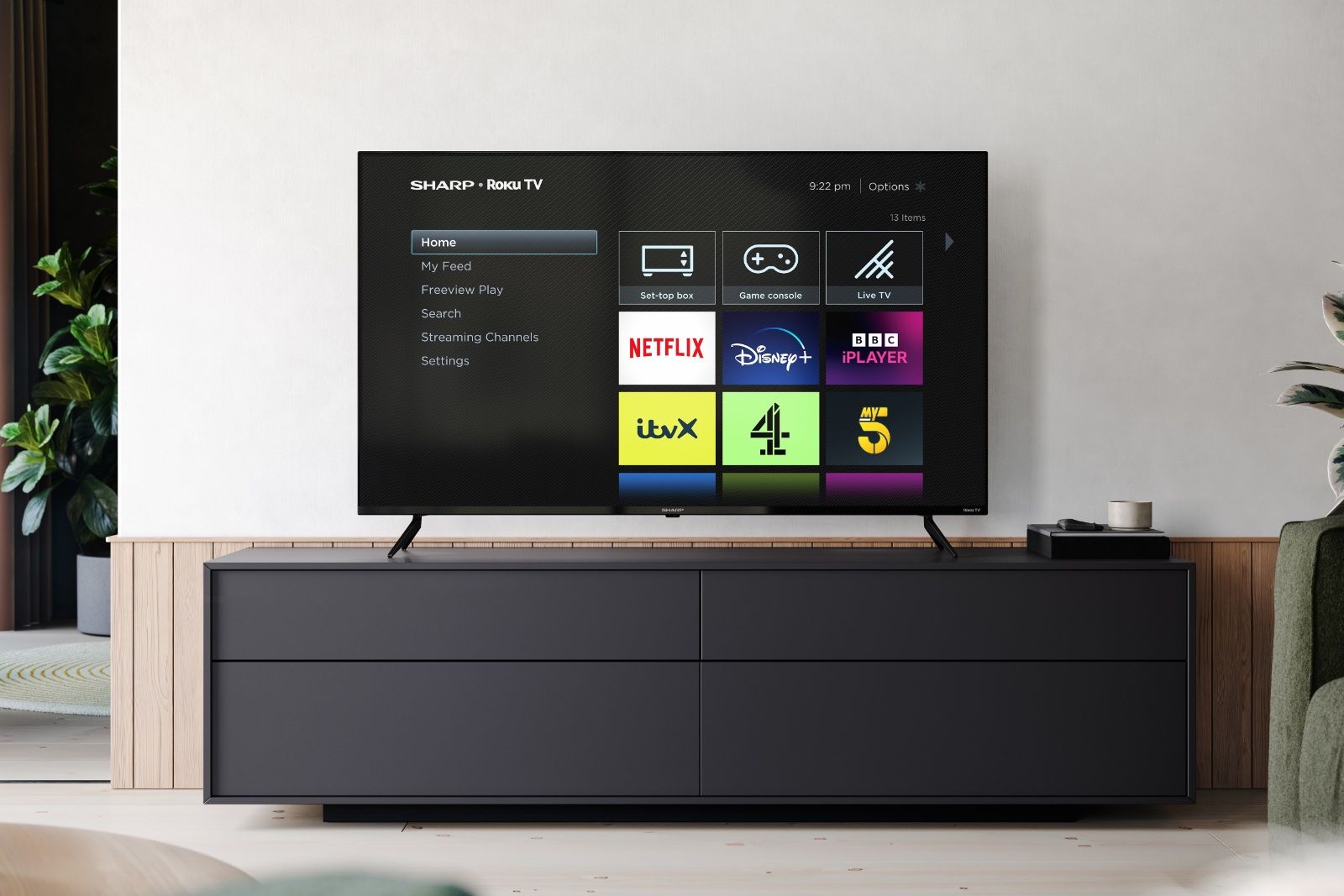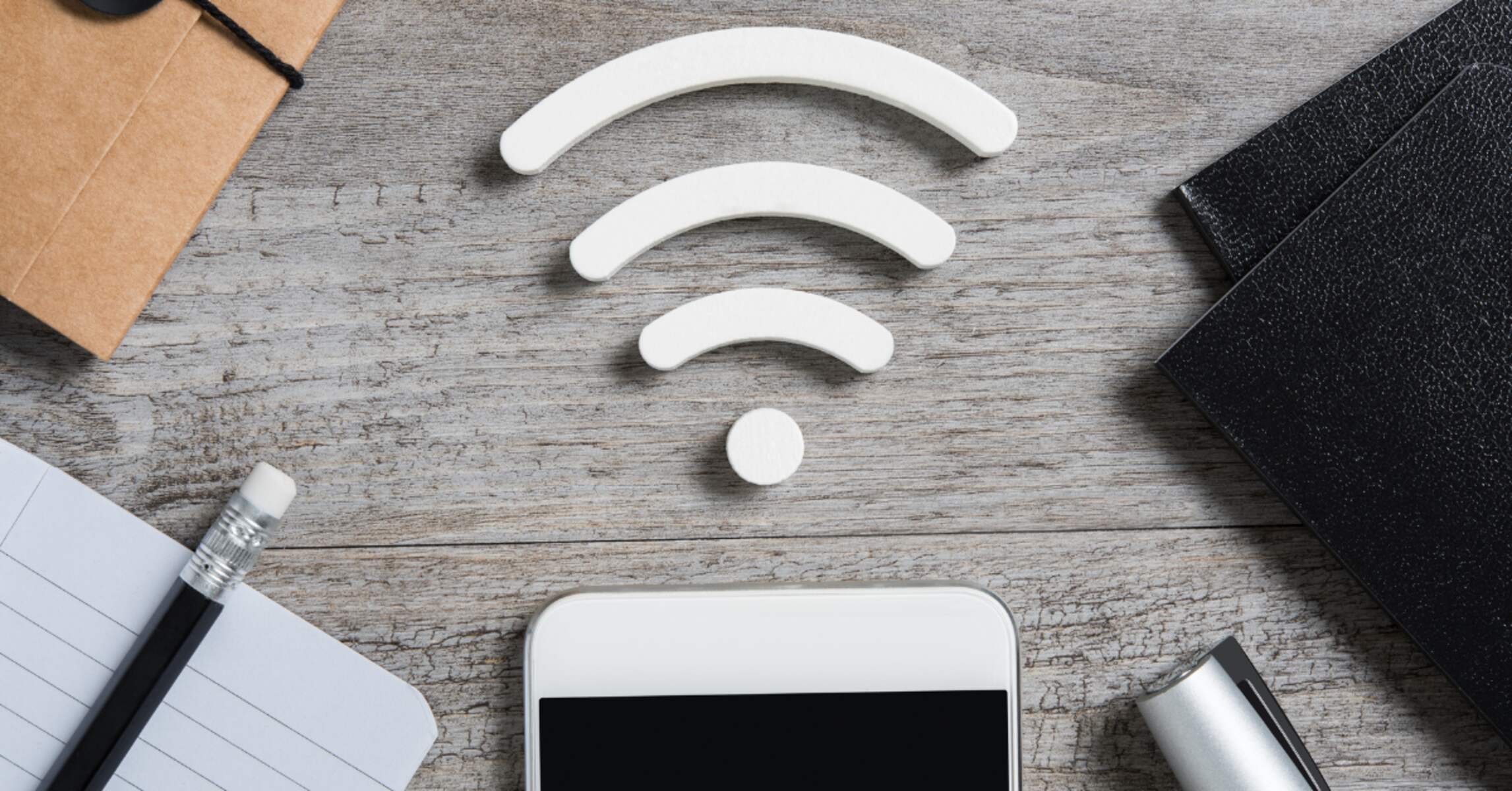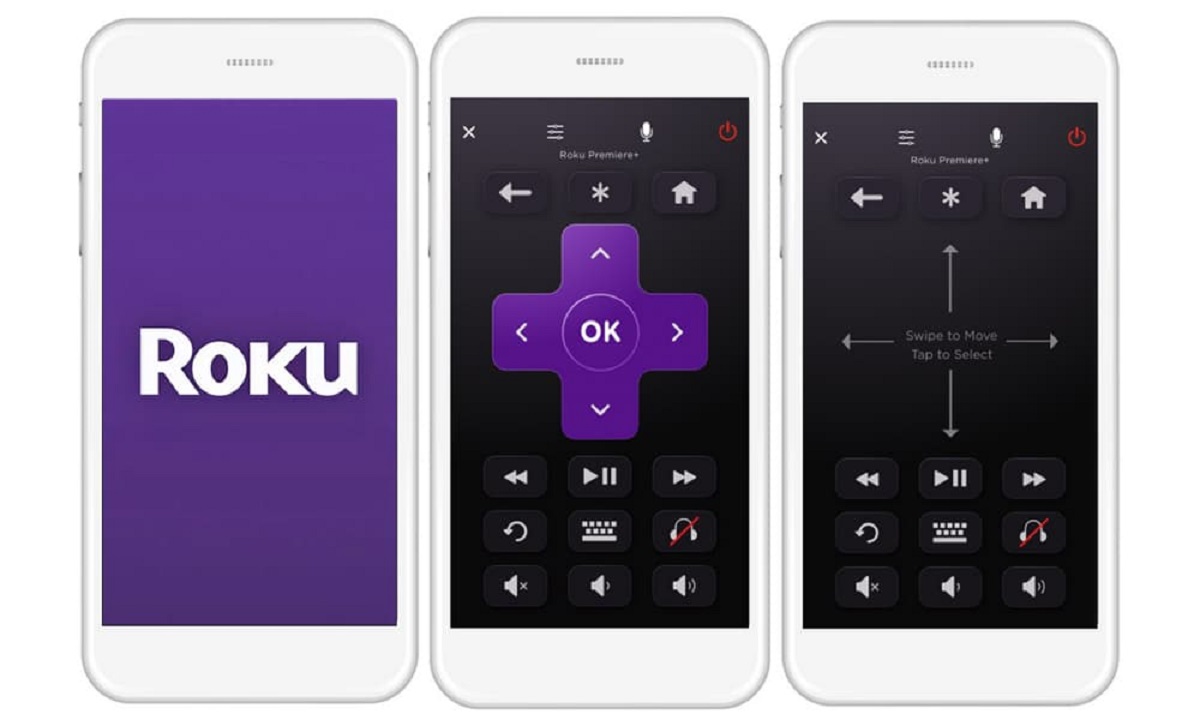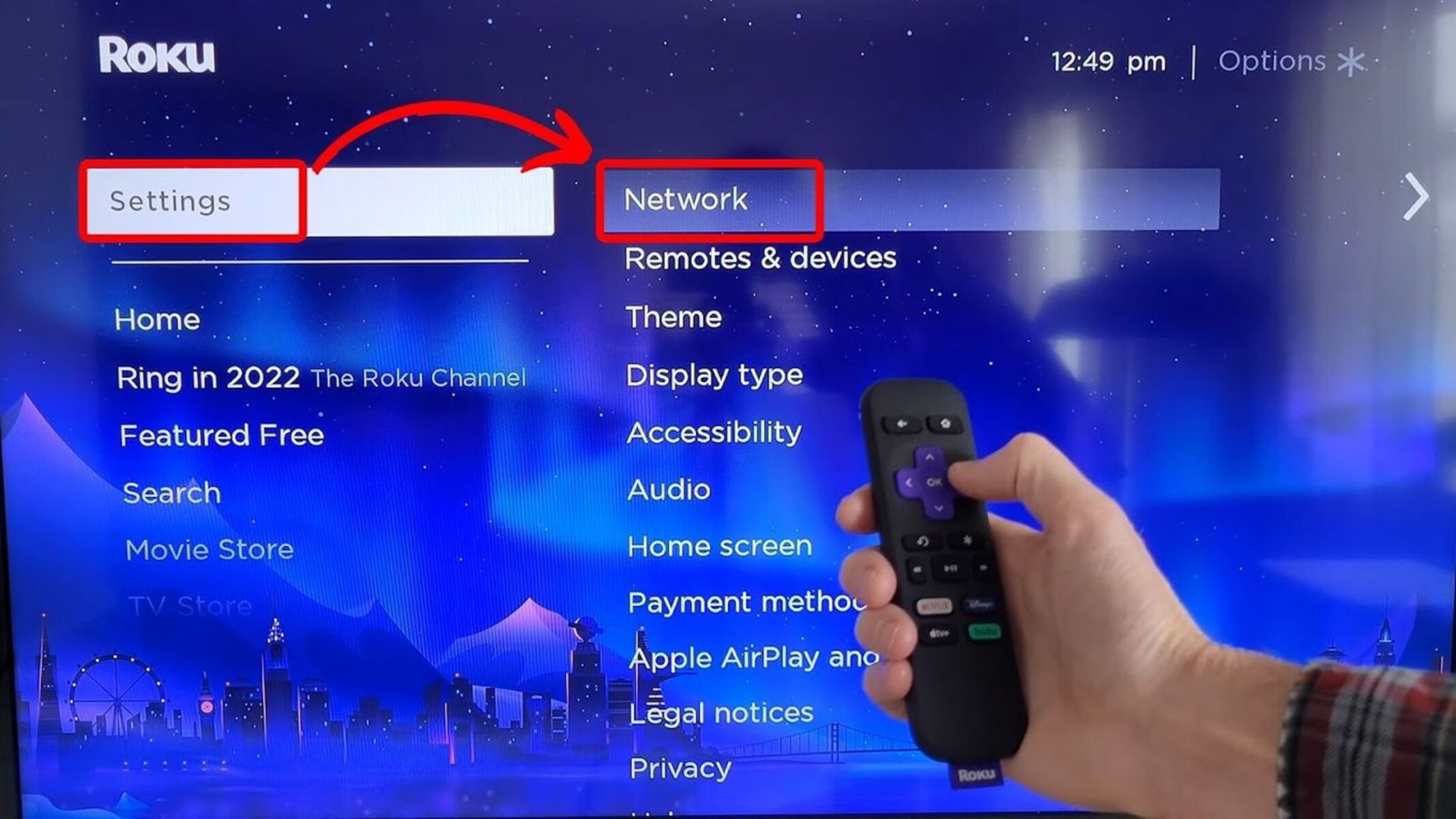Introduction
Connecting your Roku device to a hotspot can be a convenient way to enjoy your favorite streaming content, especially when a traditional Wi-Fi network isn't available. However, like any technology, issues can arise, causing frustration and disrupting your entertainment experience. In this comprehensive guide, we will explore common problems encountered when connecting a Roku device to a hotspot and provide practical solutions to help you troubleshoot and resolve these issues.
Whether you're trying to stream a thrilling movie, catch up on the latest episodes of your favorite series, or simply enjoy some relaxing music, a stable and reliable connection is essential. Unfortunately, when your Roku device encounters connectivity issues with a hotspot, it can put a damper on your entertainment plans. Fear not, as we're here to equip you with the knowledge and troubleshooting tips to overcome these challenges.
By the end of this guide, you will have a clear understanding of the steps you can take to address connectivity issues, optimize your Roku device's performance, and ensure seamless streaming experiences. So, grab your favorite snack, get comfortable, and let's dive into the world of troubleshooting Roku connections to hotspots.
Check Your Network Connection
Before delving into complex troubleshooting steps, it's crucial to start with the basics. When encountering connectivity issues with your Roku device and a hotspot, the first step is to check your network connection. This involves verifying that your hotspot is functioning properly and is within an optimal range for your Roku device to establish a stable connection. Here are the key steps to follow:
-
Verify Hotspot Availability: Ensure that the hotspot you intend to connect to is active and within range. Sometimes, the hotspot may be temporarily unavailable or experiencing technical issues, leading to connectivity problems. If possible, try connecting another device, such as a smartphone or laptop, to the hotspot to confirm its availability and functionality.
-
Signal Strength: Assess the signal strength of the hotspot in the vicinity of your Roku device. Weak signal strength can result in intermittent or unreliable connections. You can use a smartphone or a Wi-Fi signal strength app to gauge the signal quality at the location of your Roku device. If the signal is weak, consider repositioning the hotspot or your Roku device to improve the signal reception.
-
Network Compatibility: Ensure that the hotspot network is compatible with your Roku device. Some older Roku models may not support certain network types or frequencies. Check the specifications of your Roku device and compare them with the hotspot network settings to confirm compatibility.
-
Authentication and Password: Double-check the authentication method and password required to connect to the hotspot. Ensure that the correct security protocol (such as WPA2) and password are entered into your Roku device. Incorrect credentials can prevent successful connection establishment.
By meticulously examining and addressing these fundamental aspects of your network connection, you can lay a strong foundation for troubleshooting potential issues. Once you have verified the network connection, you can proceed to explore additional troubleshooting steps to further enhance the connectivity between your Roku device and the hotspot.
Restart Your Roku Device
Restarting your Roku device is a fundamental yet effective troubleshooting step that can address a wide range of connectivity issues when attempting to connect to a hotspot. Just like any electronic device, Roku players and Roku TVs can benefit from a periodic reset, which helps clear temporary glitches and refresh the system. Here's why restarting your Roku device is a valuable troubleshooting strategy and how to do it effectively:
Why Restarting Helps
When your Roku device encounters connectivity issues with a hotspot, it can be due to various factors, including software hiccups, temporary network conflicts, or memory overload. Restarting the device allows it to start afresh, clearing any temporary data or processes that may be hindering its ability to connect to the hotspot. This simple action can often resolve minor technical glitches and restore the device's functionality.
How to Restart Your Roku Device
-
Using the Remote: If your Roku device is responsive, you can restart it using the remote control. Simply navigate to the Settings menu, select System, and then choose System Restart. Follow the on-screen prompts to confirm the restart, and your Roku device will power down and reboot.
-
Using the Power Cord: In cases where the device is unresponsive or frozen, you can perform a manual restart by unplugging the power cord from the Roku device. Wait for about 10-15 seconds before plugging it back in. This action effectively cuts the power supply, allowing the device to reset when powered on again.
Benefits of Restarting
- Clears Temporary Data: Restarting your Roku device clears temporary files and processes, which can help resolve network-related issues.
- Refreshes Network Connections: It gives your device a chance to reestablish a fresh connection to the hotspot, potentially resolving any underlying connectivity problems.
- Improves Performance: By clearing system memory and refreshing software processes, a restart can enhance the overall performance of your Roku device.
When to Restart
It's advisable to restart your Roku device whenever you encounter persistent connectivity issues with a hotspot. Whether you're experiencing slow or erratic connections, buffering problems, or difficulty establishing a connection, a restart can often serve as a quick and effective remedy.
By incorporating the practice of restarting your Roku device into your troubleshooting routine, you can proactively address connectivity issues and maintain a seamless streaming experience. This simple yet powerful action can often save you time and frustration, allowing you to enjoy uninterrupted access to your favorite entertainment content.
Move Your Roku Closer to the Hotspot
When encountering connectivity issues between your Roku device and a hotspot, the physical proximity between the two plays a crucial role in establishing a stable and reliable connection. Moving your Roku device closer to the hotspot can significantly improve signal strength and reduce the likelihood of interference, thereby enhancing the overall connectivity experience.
Importance of Proximity
The distance between your Roku device and the hotspot directly impacts the quality of the wireless connection. When your Roku device is too far from the hotspot, the Wi-Fi signal may weaken, leading to potential connectivity issues such as slow streaming, buffering, or intermittent disconnections. By bringing the Roku device closer to the hotspot, you can mitigate these problems and create a more robust wireless link.
Signal Strength Improvement
By relocating your Roku device closer to the hotspot, you can effectively boost the signal strength, resulting in a more stable and consistent connection. This can lead to improved data transfer rates, reduced latency, and an overall smoother streaming experience. Additionally, a stronger signal can help prevent signal dropout, ensuring uninterrupted enjoyment of your favorite content.
Interference Reduction
Physical obstacles and electronic devices can interfere with Wi-Fi signals, causing disruptions to the wireless connection between your Roku device and the hotspot. By moving the Roku device closer to the hotspot and reducing the distance and potential obstructions, you can minimize the impact of interference, thereby enhancing the reliability of the connection.
Optimizing Placement
When relocating your Roku device, consider strategic placement to maximize signal reception. Avoid placing the device in enclosed spaces or near large obstructions, as these can impede the Wi-Fi signal. Instead, position the device in an open area, away from potential sources of interference, to optimize the wireless connection.
Real-World Application
In practical terms, if your Roku device is located in a room distant from the hotspot, consider physically moving it closer to the source of the Wi-Fi signal. This may involve repositioning the device within the same room or relocating it to a different area that offers better proximity to the hotspot. By doing so, you can potentially alleviate connectivity issues and enjoy a more seamless streaming experience.
By recognizing the significance of physical proximity and taking proactive steps to optimize the placement of your Roku device in relation to the hotspot, you can enhance the wireless connectivity, minimize potential interference, and ultimately elevate your streaming experience. This straightforward yet impactful approach can be a valuable troubleshooting strategy when aiming to establish a robust connection between your Roku device and a hotspot.
Check for Interference
When troubleshooting connectivity issues between your Roku device and a hotspot, it's essential to consider potential sources of interference that can disrupt the wireless signal. Interference can manifest in various forms, including physical obstacles, electronic devices, and neighboring networks, all of which have the potential to degrade the quality of the Wi-Fi connection. By identifying and addressing these sources of interference, you can significantly improve the stability and reliability of the wireless link between your Roku device and the hotspot.
Types of Interference
-
Physical Obstacles: Walls, furniture, and large objects can obstruct the propagation of Wi-Fi signals, leading to signal attenuation and reduced coverage. When your Roku device is situated in close proximity to such obstacles, the Wi-Fi signal may experience degradation, resulting in connectivity issues. Identifying and minimizing the impact of physical barriers is crucial for optimizing the wireless connection.
-
Electronic Devices: Household appliances, electronic gadgets, and even fluorescent lights can emit electromagnetic interference that interferes with Wi-Fi signals. The proximity of these devices to your Roku device or the hotspot can disrupt the wireless connection, causing instability and potential disconnections. Understanding the potential interference sources within your environment is vital for troubleshooting connectivity issues.
-
Neighboring Networks: In densely populated areas, multiple Wi-Fi networks operating on the same or overlapping channels can cause interference. This can lead to signal congestion and increased susceptibility to interference from neighboring networks. Analyzing the Wi-Fi environment and adjusting your network settings can help mitigate the impact of neighboring networks on your Roku device's connectivity.
Mitigating Interference
-
Optimal Placement: Position your Roku device and the hotspot in locations that minimize the impact of physical obstacles. By strategically placing the devices in open areas and away from large obstructions, you can enhance the signal propagation and reduce the effects of physical interference.
-
Frequency Selection: If your hotspot allows for channel selection, consider switching to a less congested Wi-Fi channel to reduce interference from neighboring networks. This can help improve the overall signal quality and enhance the stability of the wireless connection.
-
Interference-Avoidance: Identify electronic devices that may be causing interference and reposition them away from the Roku device and the hotspot. Additionally, consider using shielded cables and devices that comply with electromagnetic compatibility standards to minimize interference.
By proactively identifying and addressing potential sources of interference, you can optimize the wireless connection between your Roku device and the hotspot, resulting in improved signal quality, reduced connectivity issues, and a more seamless streaming experience. Understanding the nature of interference and implementing effective mitigation strategies is essential for maintaining a robust and reliable wireless link.
Update Your Roku Software
Keeping your Roku software up to date is a critical aspect of maintaining optimal performance and addressing potential connectivity issues when using a hotspot. Roku regularly releases software updates that introduce new features, enhancements, and crucial bug fixes, including improvements related to network connectivity and wireless communication. By ensuring that your Roku device is running the latest software version, you can benefit from enhanced stability, compatibility, and overall functionality.
Importance of Software Updates
Software updates play a vital role in addressing known issues and vulnerabilities that may affect the performance of your Roku device. When it comes to connectivity with a hotspot, these updates often include optimizations to improve Wi-Fi connectivity, address network compatibility issues, and enhance the overall reliability of the wireless connection. By staying current with software updates, you can leverage these improvements to mitigate potential connectivity challenges.
How to Update Your Roku Software
-
Automatic Updates: By default, Roku devices are designed to automatically check for and install software updates when connected to the internet. When an update is available, your Roku device will download and install it in the background, ensuring that you are always running the latest software version.
-
Manual Update: If you prefer to manually check for updates or suspect that your device may be running an outdated software version, you can initiate a manual update through the Roku settings menu. Simply navigate to Settings > System > System Update and select "Check Now" to prompt the device to search for available updates.
Benefits of Updating
-
Enhanced Compatibility: Software updates often include improvements to enhance compatibility with various network configurations and hotspot types, ensuring that your Roku device can seamlessly connect to a wide range of wireless networks.
-
Bug Fixes: Many software updates address specific bugs and issues that may impact network connectivity. By applying these updates, you can resolve underlying technical problems that could hinder your Roku device's ability to establish a stable connection with a hotspot.
-
Performance Optimization: Updated software may introduce performance optimizations related to wireless communication, network discovery, and data transfer, leading to improved overall connectivity and streaming experiences.
Frequency of Updates
Roku typically releases software updates periodically, with the frequency of updates varying based on the device model and the nature of the improvements being introduced. It is advisable to allow automatic updates to ensure that your device remains current with the latest software enhancements, including those related to network connectivity.
By prioritizing the regular update of your Roku software, you can proactively address potential connectivity issues, benefit from performance optimizations, and ensure that your device is equipped with the latest features and improvements. This proactive approach to software maintenance can contribute to a more reliable and seamless streaming experience, especially when utilizing a hotspot for wireless connectivity.
Reset Your Roku Device
Resetting your Roku device can serve as a powerful troubleshooting tool when encountering persistent connectivity issues with a hotspot. While restarting the device provides a soft reset by rebooting the system, performing a factory reset takes the process a step further, restoring the device to its original settings. This comprehensive reset can effectively address complex technical issues, including network connectivity challenges, and is often considered a last resort when other troubleshooting methods have proven ineffective.
Soft Reset vs. Factory Reset
It's important to differentiate between a soft reset and a factory reset. A soft reset, as mentioned earlier, involves restarting the device to clear temporary data and refresh the system. On the other hand, a factory reset restores the device to its factory default settings, erasing all personal preferences, installed channels, and network configurations. While a soft reset is a quick and convenient way to address minor issues, a factory reset is a more drastic measure that should be approached with caution due to its comprehensive nature.
When to Consider a Factory Reset
A factory reset should be considered when all other troubleshooting steps have been exhausted, and persistent connectivity issues with a hotspot persist. This includes situations where the Roku device fails to establish a stable connection, experiences frequent network dropouts, or exhibits erratic behavior despite other attempted fixes. Additionally, if the device has been used across multiple networks and settings have become convoluted, a factory reset can provide a clean slate for reconfiguring the network connection.
Performing a Factory Reset
To perform a factory reset on your Roku device, navigate to the Settings menu and select System. Within the System menu, choose Advanced System Settings, then Factory Reset. Follow the on-screen prompts to confirm the reset, and the device will initiate the process, restoring its original settings. It's important to note that a factory reset erases all personal data and settings, so it's advisable to back up any important information or preferences before proceeding with the reset.
Post-Reset Considerations
After performing a factory reset, you will need to reconfigure your Roku device, including reconnecting it to the hotspot, reinstalling channels, and adjusting settings to suit your preferences. While this process may seem laborious, it provides a clean slate to address persistent connectivity issues and ensures that the device operates with a fresh set of configurations.
Proceed with Caution
Given the comprehensive nature of a factory reset, it is crucial to exercise caution and consider it as a last-resort troubleshooting step. Before proceeding with a factory reset, explore other potential solutions and ensure that all other troubleshooting methods have been thoroughly exhausted. Additionally, consider reaching out to Roku support for guidance before initiating a factory reset, as their expertise can provide valuable insights and alternative solutions.
By understanding the distinction between a soft reset and a factory reset, recognizing the appropriate scenarios for performing a factory reset, and proceeding with caution, you can leverage this powerful troubleshooting method to address persistent connectivity issues with a hotspot. While a factory reset should be approached with care, it can serve as a valuable tool for restoring the functionality of your Roku device and ensuring a stable and reliable connection to your preferred hotspot.
Contact Roku Support
If you have exhausted all available troubleshooting options and are still experiencing persistent connectivity issues with your Roku device and a hotspot, reaching out to Roku support can provide valuable assistance and guidance. Roku offers comprehensive customer support services aimed at addressing a wide range of technical challenges, including network connectivity issues. By engaging with Roku support, you can leverage their expertise and resources to diagnose and resolve complex network-related problems, ensuring that you can enjoy uninterrupted access to your favorite streaming content.
When contacting Roku support, it's important to provide detailed information about the specific connectivity issues you are encountering. This may include describing the symptoms, such as intermittent disconnections, slow network speeds, or difficulty establishing a connection to the hotspot. Additionally, sharing any relevant error messages or indicators displayed on the Roku device can help Roku support agents better understand the nature of the problem and provide targeted assistance.
Roku offers multiple channels for contacting support, catering to diverse user preferences and needs. These channels may include online chat support, email support, and phone support, allowing you to choose the communication method that best suits your preference and urgency. The Roku support team comprises knowledgeable professionals equipped with the expertise to troubleshoot network connectivity issues, offer personalized guidance, and escalate complex technical issues for further investigation and resolution.
When engaging with Roku support, it's beneficial to be prepared with essential details about your network setup, including the hotspot type, network configuration, and any specific network settings that may impact the connectivity of your Roku device. This information can facilitate a more efficient troubleshooting process and enable the support team to tailor their recommendations to your unique network environment.
By leveraging the resources and expertise of Roku support, you can gain valuable insights, personalized recommendations, and potential solutions to address the connectivity challenges you are facing. Whether it involves adjusting network settings, diagnosing potential hardware issues, or exploring alternative connectivity options, Roku support can serve as a valuable ally in your quest to establish a stable and reliable connection between your Roku device and the hotspot.
In summary, contacting Roku support can be a pivotal step in resolving persistent connectivity issues with your Roku device and a hotspot. By providing detailed information, leveraging the available support channels, and collaborating with the knowledgeable support team, you can access the guidance and assistance needed to overcome network-related challenges and ensure a seamless streaming experience.







